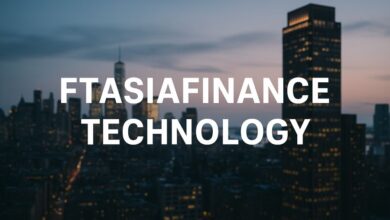Aeonscope.net Gaming Scope: Revolutionizing the Future of Immersive Gameplay
A Powerful Tool for Precision, Strategy, and Enhanced Gaming Experiences

Introduction
In the rapidly evolving world of gaming, staying ahead requires more than just skill—it demands advanced technology and strategic tools. Aeonscope.net Gaming Scope has emerged as a groundbreaking platform that combines precision targeting, performance analytics, and immersive experiences to redefine how gamers play and compete.
This innovative tool is more than a digital weapon sight; it integrates analytical overlays, custom crosshairs, and AI-driven performance tracking to create an unparalleled experience. Whether you are a casual gamer or a competitive esports player, this platform helps you enhance gameplay, sharpen skills, and engage with an active community.
Quick Bio of Aeonscope.net Gaming Scope
| Feature | Details |
|---|---|
| Platform Name | Aeonscope.net Gaming Scope |
| Core Purpose | Enhancing gameplay with precision tools and analytics |
| Key Technologies | AI-driven tracking, VR/AR integration, blockchain, predictive analytics |
| Primary Users | Casual gamers, professional esports players, game developers |
| Notable Features | Custom crosshair, anti-lag optimization, immersive narrative design |
| Launch Objective | To merge gaming innovation with strategy and community growth |
The Vision Behind Aeonscope.net Gaming Scope
The creators of Aeonscope.net aimed to solve a core problem in gaming: the lack of an all-in-one platform that enhances performance, strategy, and community interaction. This community-centric platform brings together tools like real-time audience polling, multi-angle streaming, and AI-powered gaming assistants, making it a hub for both players and developers.
Through predictive analytics and sentiment analysis tools, it also helps businesses and game creators understand trends and player behaviors. This dual focus makes it a valuable resource for both gamers and industry leaders.
Key Features of Aeonscope.net Gaming Scope
Precision Gaming Tools
At its core, Aeonscope.net offers features designed to enhance accuracy and reaction time.
-
Custom Crosshair: Gamers can design crosshairs suited to their playstyle for improved targeting.
-
Zoom Magnification: Adjustable zoom levels provide precise aiming in competitive matches.
-
Anti-Lag Optimization: Ensures smooth gameplay even during high-stress multiplayer battles.
These precision tools make it a must-have for serious gamers who want consistent performance.
AI-Driven Performance Tracking
Artificial Intelligence plays a major role in making Aeonscope.net stand out.
-
Performance Metrics: Analyze accuracy, reaction times, and decision-making speed.
-
Cognitive Skill Enhancement: Tracks mental performance and suggests strategies to improve focus.
-
Predictive Storytelling Engines: Uses data to create dynamic in-game narratives tailored to each player.
This AI-driven performance tracking helps players grow while delivering an immersive experience.
Immersive Gaming Experience
Aeonscope.net isn’t just about statistics—it transforms the entire gaming atmosphere.
-
VR/AR Integration: Delivers an ultra-realistic feel, bridging the gap between the digital and physical worlds.
-
Immersive Narrative Design: Adds depth to gameplay, making every session unique and story-driven.
-
Interactive Overlays: Allows real-time changes to gaming visuals and settings during play.
For fans of space exploration gaming and speculative storylines, this platform provides next-level immersion.
Strategic Gameplay Enhancement
Competitive gamers benefit from advanced strategy tips and real-time insights.
-
Esports Insights: Learn from professional players and adapt strategies to win.
-
Game Walkthroughs: Access expert-created guides for complex levels and missions.
-
Competitive Gaming Strategy: Build techniques for long-term success in tournaments.
Aeonscope.net bridges the gap between casual play and professional-level gaming.
Community and Developer Engagement
The platform fosters a collaborative environment through unique initiatives.
-
Developer Spotlight Program: Encourages creators to showcase new games and features.
-
Community-Centric Platform: Gamers can share experiences, discuss strategies, and vote on features through real-time audience polling.
-
Revenue Stream Diversification: Provides monetization opportunities for streamers and developers alike.
This level of engagement ensures that Aeonscope.net remains dynamic and player-driven.
Benefits of Aeonscope.net Gaming Scope
Positive Aspects
-
Enhanced Accuracy: Tools like custom crosshairs and zoom magnification give a competitive edge.
-
Comprehensive Analytics: AI-powered insights help improve performance steadily.
-
Immersive Design: VR/AR features create a truly futuristic experience.
-
Community Support: Encourages teamwork and knowledge sharing among gamers.
Potential Drawbacks
-
Learning Curve: Some users may find advanced features challenging at first.
-
Tech Requirements: High-end VR/AR features may need powerful hardware.
How Aeonscope.net Gaming Scope Stands Out
What makes this platform unique is its ability to combine multiple aspects of gaming into one system:
-
A digital weapon sight for precision.
-
Blockchain integration for secure, verifiable gaming assets.
-
Cross-platform compatibility, ensuring it works on various devices.
-
Support for both real-world skill-building and entertainment.
By merging these features, Aeonscope.net goes beyond being just a gaming tool—it becomes a comprehensive ecosystem.
Conclusion
Aeonscope.net Gaming Scope is revolutionizing the way gamers interact with technology. Its blend of precision targeting tools, AI-driven analytics, and immersive storytelling makes it a vital companion for both casual players and competitive esports enthusiasts. While it may require some time to master, the rewards are well worth the effort.
With features like multi-angle streaming, interactive overlays, and predictive analytics, Aeonscope.net sets a new standard for the future of gaming. For those seeking to dominate their games while enjoying a community-driven experience, this platform is a game-changer.
FAQs
Q1: What is Aeonscope.net Gaming Scope?
It is an advanced gaming platform designed to improve precision, performance, and immersion through cutting-edge technology and analytics.
Q2: Does it support VR and AR gaming?
Yes, Aeonscope.net offers full VR/AR integration, making games more immersive than traditional platforms.
Q3: Who can benefit from Aeonscope.net?
Casual gamers, professional esports players, and even game developers can leverage its tools and insights.
Q4: Is it suitable for competitive gaming?
Absolutely. With features like custom crosshairs, anti-lag optimization, and performance tracking, it is built for competitive players.
Q5: Can developers collaborate on this platform?
Yes, through the Developer Spotlight Program, creators can showcase their innovations and engage with the community.



